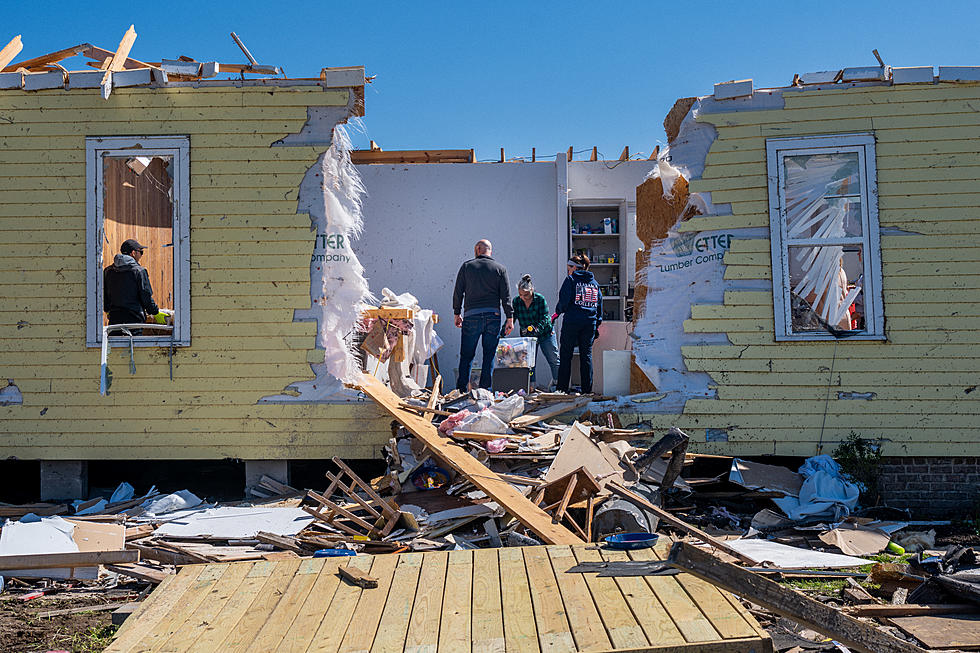
Study: Shreveport Tornadoes Cause $5.6 Million In Damage Per Year
Over the last 20 years, tornadoes have become such a big part of life for large chunks of our country. From the "tornado alley" states to the deep south, the Midwest to the east coast, tornadoes regularly impact over half of the states in the country. Alaska, Hawaii, and the far northern corners of the east and west coasts are the only places in the US that really don't have much to worry about on an annual basis.
But are there actually more tornadoes today, or do we just feel like there are more?
With nonstop news coverage of tornado outbreaks, social media shares on tornado videos, and blockbuster movies based on the weather phenomenon...maybe we're just focusing on the destructive weather more. A new study from Captain Experiences has actually done a study to track exactly that.
Here's how they describe the system they used to get their data:
"To find the locations with the largest increase in tornadoes, researchers ranked locations by the total change in high-intensity tornado occurrences from the 20-year period ending in November 2004 to the 20-year period ending in November 2023. High-intensity tornadoes were considered to be those categorized as EF2 or higher on the Enhanced Fujita Scale."
Much of the data does indicate an increased number of tornadoes, and also an increase to the intensity of these storms. But it also indicates a change to your traditional "tornado alley" in the US. Just read this impressive explanation from the research:
"However, the next two decades saw a notable shift in tornado geography. Although Tornado Alley was still heavily frequented with tornado occurrences, areas in the Southeast experienced sizable increases. Mississippi led all states with 303 EF2+ tornado occurrences during that span, a more than 77% increase from the prior 20-year period. Similarly, Alabama (277) and Georgia (194) saw the third and fifth most EF2+ tornadoes, respectively, both translating to increases of over 60%.
This pronounced shift eastward to “Dixie Alley”—or the area roughly stretching from eastern Texas to the western borders of the Carolinas—is mirrored at the metropolitan level. Over the past two decades, the Birmingham-Hoover, AL and Hattiesburg, MS metro areas observed the most substantial increases in high-intensity tornadoes, recording an additional 19 and 18 EF2+ tornadoes, respectively. In contrast, despite enduring double-digit tornado occurrences over the same period, the Houston-The Woodlands-Sugar Land, TX and Indianapolis-Carmel-Anderson, IN metros each experienced a decrease of 18 EF2+ tornadoes."
The research looked a specific metro areas inside their data. Including the Shreveport-Bossier City metro. They ranked these areas based on the change in "high-intensity" tornado occurrences between 2003-2023. According to what they found, Shreveport-Bossier has had one of the biggest decreases during that time period.
The Shreveport area ranked in a tie for the third largest decrease in major tornado activity, with a decrease of 8% in "high-intensity" tornado occurrences.
Just because the numbers are down, it doesn't mean things have been easy on Shreveport. The research shows just how much damage and destruction tornadoes have caused the area over that time period.
During this time period, the tornadoes that have struck the Shreveport-Bossier area have led to fatalities, and 26 injuries.
Those same storms cost the Shreveport-Bossier area $5,652,014 annually (adjusted for inflation). That's over the 20 year span included in the study, which only included the "high-intensity" storms.
SHOCKING: These Were the Biggest Tornadoes in Louisiana of the Past Decade
Gallery Credit: Stacker
TWISTERS: Counties With the Most Tornadoes in Oklahoma
Gallery Credit: Stacker
